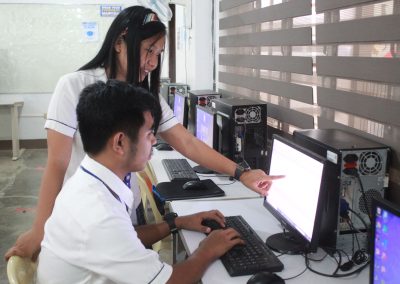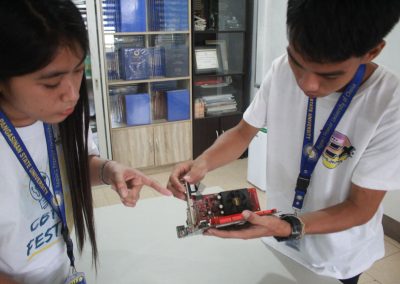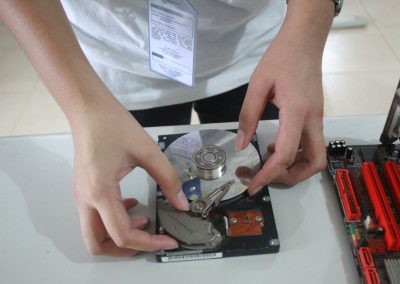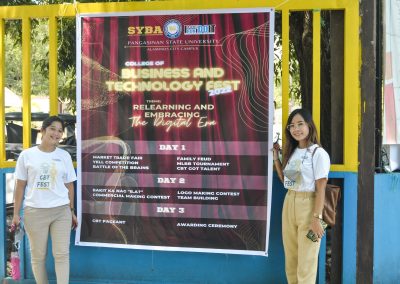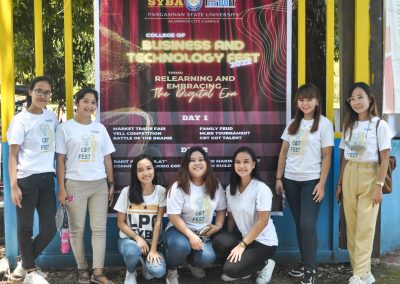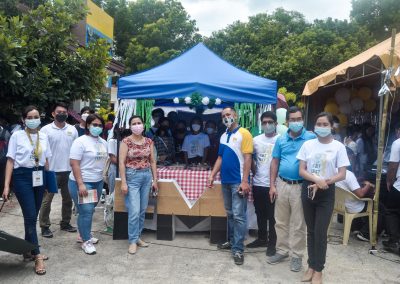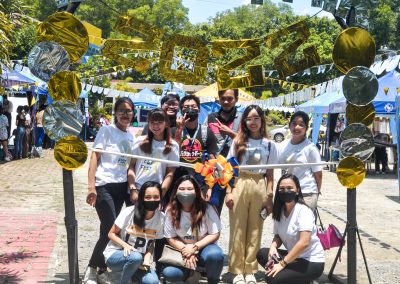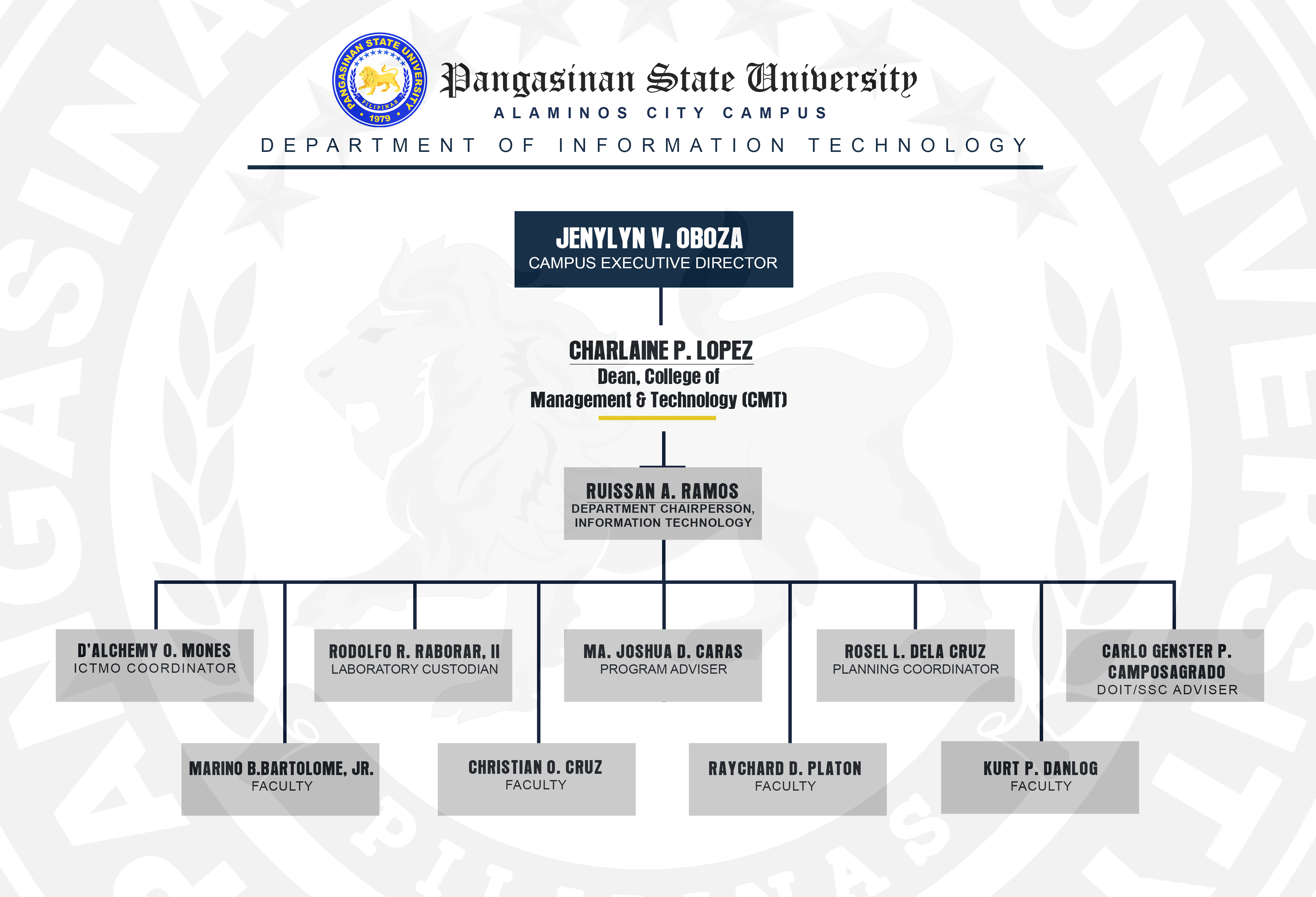
RUISSAN A. RAMOS
Department Chair
WELCOME TO THE IT DEPARTMENT!
It is an honor to be part of a system that provides education in Information Technology. It is a diverse field that plays a fundamental role in every sector of society. We believe that an avenue of learning should be made available to students who aim to be part of the industry. That is why we strive to continuously improve our operations and processes to provide our students with a learning environment suited for a comprehensive course. We have always been committed to delivering industry standard tools and instruction in designing, developing, supporting, and managing IT systems to produce competitive and well-versed professionals.
The Information and Technology Department conducts different events and training, from social gathering activities, computer assembly, and software programming, to be able to holistically develop our students in their chosen fields.
The BS Information Technology program at PSU-Alaminos City Campus is one of the top producers of quality IT graduates. The program consistently adheres to the CHED standards for higher educational institutions and continuously updates its curricular offering in response to the ever-changing IT field.
Over the years, the IT degree program has been a most sought-after course. The number of enrolled students has continued to rise since its start in 1998. As globalization spreads, the need for IT graduates will continue to grow. This has prompted the Campus to offer BS Information Technology. The IT Department has continuously subjected the program to various accreditations to ensure excellence in its four-fold services: instruction, research, extension, and production. The quest for excellence is a lifelong commitment of the IT Department.
As the challenges of delivering educational services are getting more demanding, the IT Department cannot afford to be complacent. With the assistance of the present PSU administration, the IT Department acquired modern laboratory equipment that offers hands-on training to students, preparing them to enter the job market with the best training. Moreover, the strength of the IT Department comes from its committed and dedicated faculty who work tirelessly to support the University in its quest to make the institution the top State University in the ASIAN region. Even though the pandemic ravaged the entire world, hitting complex educational institutions, it could not break the IT faculty’s determination to deliver quality instruction.
The IT Department is more committed to giving the best education possible to students who entrust their future to Pangasinan State University.
ACCREDITED
AACCUP LEVEL II
STUDENT’S EMPLOYMENT OPPORTUNITIES
- Application Developer
- Database Administrator
- Digital Animator
- Information Security Administrator
- Multimedia Technologist
- Network Administrator
- Network Engineer
- Systems Analyst
- Test Engineer
- Web Administrator/ Web Master
- Web Developer
The intent of the Information Technology program is to produce graduates who are able to meet the demands of the IT professional in the industry, both local and national area and in the ASEAN region. It has the following objectives:
1. Undertake projects that show ability to solve complex problems and to work in teams on problems whose solutions lead to significant societal benefits.
2. Communicate effectively with diverse stakeholders as well as function appropriately in a team environment.
3. Demonstrate ethical behavior as an IT professional and sensitivity to the impact of technology and society.
4. Engage in lifelong learning and professional development.
|
PROGRAM OUTCOMES |
PERFORMANCE INDICATORS |
|
Apply knowledge of computing, science, and mathematics appropriate to the discipline. |
|
|
Distinguish best practices and standards and their applications. |
|
|
Analyze complex problems, and identify and define the computing requirements appropriate to its solution. |
|
|
Identify and analyze user needs and take them into account in the selection, creation, evaluation and administration of computer-based systems. |
|
|
Design, implement, and evaluate computer-based systems, processes, components, or programs to meet desired needs and requirements under various constraints. |
|
|
Integrate IT-based solutions into the user environment effectively. |
|
|
Apply knowledge through the use of current techniques, skills, tools and practices necessary for the IT profession. |
|
|
Function effectively as a member or leader of a development team recognizing the different roles within a team to accomplish a common goal. |
Team member:
Leader of a team:
|
|
Assist in the creation of an effective IT project plan. |
|
|
Communicate effectively with the computing community and with society at large about complex computing activities through logical writing, presentations, and clear instructions. |
|
|
Analyze the local and global impact of computing and information technology on individuals, organizations, and society. |
|
|
Understand professional, ethical, legal, security and social issues and responsibilities in the utilization of information technology. |
|
|
Recognize the need for and engage in planning self-learning and improving performance as a foundation for continuing professional development. |
|
- Develop the students’ competencies by instilling the latest IT knowledge and skills.
- Develop and enrich the IT education curriculum that is flexible and adaptable to meet the needs of students and the IT industry.
- Promote students’ holistic development to improve their skills and abilities.
- Expand and establish network of linkages with other institutions both private and public to strengthen academe-industry support.
- Establish instruction-related support systems.
